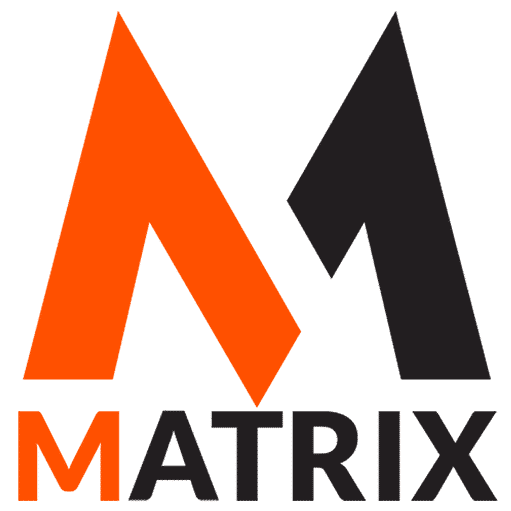How the Chief Revenue Officer Transformed Growth with an AI Agentic Shift in Sales and Marketing and PrescientIQ.
How the Chief Revenue Officer Transformed Growth with an AI Agentic Shift in Sales and Marketing and PrescientIQ.
The AI Agentic Shift in Sales and Marketing
Executive Summary
In 2025, the pace of change in enterprise AI reached an inflection point. Digital transformation has evolved from correlation-based dashboards and analytics to something far more autonomous — AI-agentic systems like PrescientIQ.
These networks of AI agents don’t just assist humans; they act, forecast, execute, and optimize entire business functions.
This is the story of Sara, the Chief Revenue Officer of a global manufacturing company, who faced a familiar but dangerous problem: her sales and marketing organization had optimized every process, yet growth had stalled.
Then she discovered Aether by PrescientIQ, an AI simulation platform that measures and forecasts AI ROI — before implementation.
Through Aether, Sara didn’t just add another AI tool to her stack; she orchestrated an agentic transformation that redefined how her organization measures value, scales growth, and governs automation.
Over the next 12 months, her company transitioned from human-led processes to human-orchestrated, AI-driven agent networks. This is her roadmap — and a cautionary tale for every executive still “experimenting” with AI while competitors move ahead.
1. The FOMO Moment: When Optimization Isn’t Enough

Sara’s organization had invested millions in AI-enhanced operations:
- Predictive lead scoring
- CRM analytics dashboards
- Marketing automation systems
- Dynamic pricing algorithms
By every internal metric, things looked good. Conversion rates were steady, costs were manageable, and the dashboards glowed green.
But board meetings told another story — competitors were gaining market share.
Despite all the optimization, growth had flatlined. Her CEO asked bluntly:
“If we’re this optimized, why aren’t we growing faster?”
A week later, Sara attended an industry summit where a competitor’s CMO presented results from an agentic marketing initiative. This AI system autonomously ran campaigns, generated leads, and forecasted ROI in real time. They reported 4× productivity per marketing dollar.
That moment changed everything.
Sara realized she wasn’t just facing a performance problem — she was facing obsolescence.
2. The Agentic Shift: From Tools to Teams
The “agentic shift” describes the evolution from AI as a tool to AI as a team of agents.
Rather than humans using multiple disconnected AI apps, enterprises deploy coordinated networks of agents — each responsible for specific goals, all orchestrated by an AI “conductor.”
In an agentic enterprise and AI Agentic Shift in Sales and Marketing:
- A Creative Agent crafts campaigns.
- A Forecasting Agent models ROI and lead velocity with AIPlanPad.
- A CRM Agent manages customer outreach like AICRMPad.
- A Compliance Agent ensures every action aligns with policy.
- An Orchestrator Agent synchronizes the entire system, escalating only high-impact decisions to humans.
This was the future Sara saw unfolding. And it terrified her — because her company wasn’t prepared for it.
The new competition wasn’t between marketing teams; it was between machine-driven ecosystems.
If she didn’t move soon, she wouldn’t just lose market share — she’d lose relevance.
3. Discovering Aether by PrescientIQ: Forecasting the Future Before It Happens

In her search for clarity, Sara came across Aether by PrescientIQ — an AI simulation platform designed to answer one critical question:
“What’s the measurable ROI of AI — before you invest?”
Aether allowed executives to simulate agentic systems using their existing data, modeling how autonomous AI agents could improve performance, reduce costs, and accelerate outcomes.
The platform’s differentiator was its simulation-first approach:
Instead of waiting six months to see results post-deployment, Aether produced ROI forecasts in just 14 days, complete with cost, performance, and governance metrics.
Stop getting your AI budget cut: Move beyond “efficiency” to provable P&L impact.
Core Concept: Visually contrast the failed “efficiency-only” pitch (which collapses into a Strategic Value Black Hole) with a 4D Value Framework that ties AI to revenue, pipeline, enterprise value, and risk reduction.
The Strategic Value Black Hole
Cost-only logic collapses your business case. Efficiency ≠ investment thesis.
A 5% boost in “Lead Scoring Accuracy” = $12M in Qualified Pipeline.
Tie model accuracy to increased Sales-Accepted Leads and win-rate lift.
A 10% lift in “Cross-Sell Conversion” from AI = $45M in New Revenue.
Translate conversion lift into additional orders, margins, and P&L impact.
A 20% increase in “Customer Lifetime Value (CLV)” from AI-personalization = $100M in Enterprise Value.
Convert CLV gains into discounted cash flows the CFO recognizes.
AI-driven compliance in ad-targeting = $8M in Fines Avoided.
Model compliance avoidance as preserved operating income.
Aether’s Core Capabilities
| Capability | Description |
| Simulation Engine | Models AI agentic behavior using existing enterprise data. |
| Autonomy Delta Analytics | Quantifies the gap between current (human-augmented) performance and projected agentic outcomes. |
| Governance Framework | Ensures compliance, oversight, and human-in-the-loop control. |
| Finance Alignment | Expresses AI impact in CFO-ready language — ROI, payback, and risk-adjusted metrics. |
For Sara, Aether represented something her current tech stack lacked: strategic foresight.
It could turn AI experimentation into a measurable business case.
4. The First Simulation: Seeing the Future in Numbers
Sara started small — a simulation using Q3 data from her European marketing division.
The Aether simulation results shocked her team:
| Metric | Human-Augmented AI | Agentic AI (Simulated) |
| Campaigns per Quarter | 8 | 36 |
| Average Lead Conversion | 2.1% | 5.7% |
| Cost per Lead | $84 | $31 |
| Forecast Accuracy | 62% | 89% |
| Time-to-Market | 6 weeks | 5 days |
Aether projected a 3.4× increase in total ROI within a year, while maintaining governance compliance.
The system even forecasted organizational impacts:
- Marketing coordinators evolving into AI Orchestrators.
- Analysts shifting to AI Performance Managers.
- Human teams focus on creative strategy, not operational execution.
Sara realized she wasn’t just forecasting revenue — she was forecasting organizational design.
5. Selling the Vision: Speaking the Language of the Board

When Sara brought her findings to the board, she didn’t pitch AI hype. She presented financial forecasts:
- ROI Forecast (Simulated): +240% in 12 months
- Payback Period: Under 6 months
- Risk-Adjusted Scenarios: Conservative, Moderate, Aggressive
Governance Model: Human oversight at every escalation point
The CFO’s response:
“If we can model it, we can measure it. If we can measure it, we can fund it.”
For the first time, AI became a capital investment category, rather than an experimental expense.
Sara secured approval for a 12-month, four-phase roadmap to bring Aether’s forecasts to life.
6. The 12-Month Agentic Roadmap
Phase 1: Simulate and Strategize (Months 1–3)
Objective:
Forecast ROI and identify high-value agentic opportunities.
Key Steps:
- Run Aether simulations across three geographic markets.
- Form an AI Governance Council including the CRO, CMO, CIO, and Compliance Lead.
- Establish baseline autonomy delta metrics.
Milestones:
- Executive AI Performance Dashboard created.
- First “AI Foresight Report” presented to the board.
Phase 2: Pilot and Validate (Months 4–6)
Objective:
Launch controlled pilots in sales and marketing workflows.
Key Steps:
- Deploy Agentic Marketing Cell (autonomous content + lead gen).
- Compare Aether’s simulation predictions to real outcomes.
- Introduce the “AI Orchestrator” role to oversee agent interactions.
Milestones:
- Achieve results within ±10% of the simulation forecast.
- Create a feedback loop between human supervisors and AI agents.
Phase 3: Scale and Integrate (Months 7–9)
Objective:
Extend agentic systems across CRM, pricing, and forecasting.
Key Steps:
- Link Aether simulations to live performance data.
- Implement AI Service-Level Agreements (AISLAs) defining measurable agentic outputs.
- Train cross-functional teams on prompt orchestration and ethics.
Milestones:
- 50% of marketing workflows are autonomously executed.
- 2.5× output per marketing dollar achieved.
Phase 4: Institutionalize and Innovate (Months 10–12)
Objective:
Make agentic systems part of the company’s DNA.
Key Steps:
- Establish Agentic Operations Office (AOO).
- Publish quarterly Autonomy ROI Reports for investors and executives.
- Expand simulations into product innovation and supply chain forecasting.
Milestones:
- Achieve 3× ROI relative to baseline.
- Employee reskilling completed: humans become AI conductors, not operators.
7. Outcomes: How the Roadmap Paid Off

Twelve months later, Sara’s organization had transformed its operating rhythm.
| Impact Area | Before Aether | After 12 Months |
| Revenue per Sales Rep | Baseline | +45% |
| Marketing Cycle Time | 6 weeks | < 2 weeks |
| Forecast Accuracy | 62% | 91% |
| AI ROI Forecasting | Ad hoc | Standardized board metric |
| Employee Engagement | Declining | +24% increase |
The transformation wasn’t just technological — it was cultural.
Meetings shifted from “What went wrong?” to “What can we simulate next?”
Sara’s firm went from cautious AI experimentation to strategic AI orchestration.
Same AI spend, two outcomes: the Hope-Cast gets cut. The Investment Thesis wins.
Core Concept: Two identical $2M marketing AI projects. One ignores hidden costs and can’t prove ROI. The other uses simulation to quantify 4D value and secures approval.
8. Lessons for the C-Suite
Sara’s journey offers a roadmap for every executive seeking measurable AI transformation.
1. Forecast Before You Deploy
AI without ROI simulation is guesswork. Aether proved that predictive modeling is the missing link between vision and execution.
2. Redefine ROI Around Autonomy
Efficiency metrics like “time saved” are outdated. The new metric is Autonomy ROI — output generated by AI agents independently.
3. Govern Through Orchestration, Not Oversight
Executives must shift from “managing AI” to “conducting digital teams.” Humans remain in control — but focus on direction, not execution.
4. Build Foresight into Finance
When AI ROI becomes measurable before investment, it earns a seat in financial planning — not just innovation budgets.
5. Educate and Empower
The workforce of the future includes AI Orchestrators, Governance Analysts, and ROI Forecasters. Leadership must invest in reskilling now.
9. Cultural Transformation: From Fear to Leadership
Sara admits the shift began with fear — fear of missing out, of being left behind.
But FOMO evolved into a strategy, then into leadership.
Her mantra changed:
“AI isn’t replacing us. It’s replicating our best work at scale.”
Within a year, she went from explaining AI to her board to mentoring other executives on how to govern it profitably.
She now leads with foresight, using Aether to forecast not just profit but potential.
Today, the vast majority of enterprise AI systems function as transactional optimizers.
These tools, from predictive analytics platforms to automated marketing suites, excel at enhancing human productivity within clearly defined, operational boundaries.
They efficiently manage existing processes—scoring leads, automating emails, and generating reports—delivering incremental gains in speed and cost reduction.
They are designed to improve the human-augmented workflow, making it better, faster, and cheaper. They focus on optimization, wringing the last drops of efficiency from established business models.
However, almost all these systems share a fundamental limitation: they treat AI as an efficiency enhancer rather than a strategic contributor.
Their metrics are centered on the past or the immediate present—cost per acquisition, time-to-market reduction, or lead conversion rates.
This approach confines AI to a supporting role, where its value is measured by how much human effort it saves. The underlying assumption is that the organization’s current strategy is sound, and AI’s job is simply to execute it more flawlessly.
This transactional mindset fails to leverage AI’s true potential for strategic foresight and autonomous growth.
A platform like Aether by PrescientIQ represents the crucial shift beyond this transactional view. Instead of merely measuring the efficiency of current operations, Aether models the strategic impact of future agentic systems—quantifying the value of autonomy before a single line of code is deployed. It reframes the AI conversation from “How much money did we save?” to “How much market share can we autonomously gain?”
By forecasting the ROI of an entire agent network, it elevates AI from an operational expense to a capital investment category, fundamentally aligning it with strategic, long-term growth objectives rather than short-term process gains.
The conclusion is clear: while transactional optimizers are necessary for maintaining baseline performance, they will not secure a competitive advantage in the agentic future. True competitive separation belongs to organizations that adopt a strategic, simulation-first approach.
By treating AI as a source of measurable foresight and autonomous action, and by investing in platforms that quantify Autonomy ROI, executives can transcend optimization and lead their industries through transformation.
About Aether by PrescientIQ
Aether is PrescientIQ’s flagship AI simulation and ROI forecasting platform.
It empowers enterprises to predict the performance, value, and risk of agentic systems — before deployment.
Key Capabilities and AI Agentic Shift
- Simulation-First Modeling: Rapid ROI projections in 14 days.
- Autonomy Delta Analysis: Quantifies the difference between traditional and agentic performance.
- Governance & Compliance: Human-in-the-loop, risk modeling, and audit transparency.
- Industry-Specific Frameworks: For manufacturing, finance, healthcare, and tech.
- Secure Data Handling: Isolated, single-tenant simulations; data purged post-run.
PrescientIQ’s mission is simple: To make AI measurable, governable, and investable.


